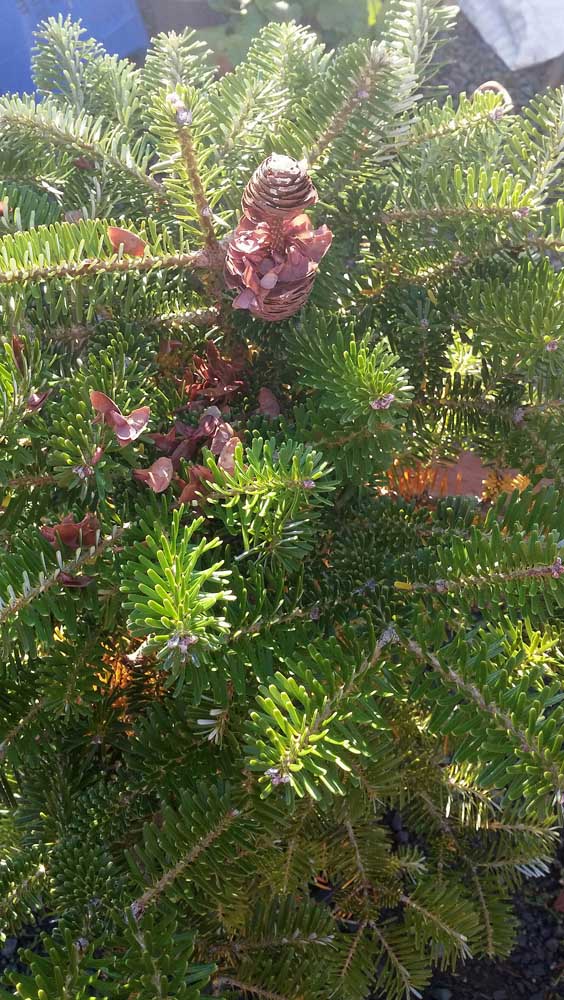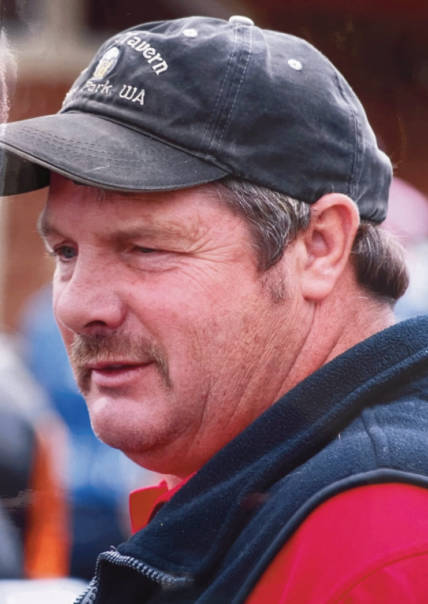Garden Mind Putting gardens to rest for the over-wintering times
Published 9:15 am Tuesday, October 6, 2015

- A Korean fir responds to autumn's call by scattering ripe seeds.
Are you pulled by the heavenly bodies? Many of us feel we are.
Trending
On Oct. 4 we watched a rare astronomical event: a blood moon lunar eclipse, a lovely sight no matter if you believe in the power of the heavens or only admire their beauty. It is also remarkable to have a clear night in the early fall, where the skies allow visibility for us to witness such an event.
Many people are intrigued by the motions of the stars; for longer than recorded history humans have tracked the movement of the heavenly bodies.
Similarly, the sea-change known as global climate change appears to be rolling along, regardless of our personal beliefs, making notable headlines with alarming and unusual weather patterns. If you are a garden-maker, you will take these changes to heart, because we may be past a point of no return. Science is mostly invisible, unless you know where to look.
Trending
As we enter autumn, shorter days send signals to plants to alter their behavior: to stop flowering, or for fruits to mature. The signals in light diffusion trigger hormones that control plant activity, and seasonal slowing of growth is the result. We can alter the result some, by providing more light, and protecting plants from cool temperatures and drafts, by overriding a natural rhythm in order to achieve longer productivity. For example, this is the method pot growers in northern climes use, also those engaged in hydroponics.
We call ourselves gardeners, plantsmen and women, or farmers. We are engaged in a process, a passion, to discover the mysteries of the plant kingdom. Many of us hope to learn more, every season, for a wee bit more performance, before the blanket of winter is fully upon us. More flowers, more cucumbers, more carrots, more productivity, please.
The local clime does not much care when or if humans get over squabbling about global climate change; know that the plants around us are in silent thrall to all the incremental shifts of temperature, light, and triggering hormones. All work in harmony to determine whether they grow, slow or quit outright.
It’s anyone’s guess if the weeks approaching 2016 will continue to be unusual. There’s not a thing we can do, except anticipate the changes, and offer protection to the plants. And to be prepared, as stewards of the planet, for we have chosen this path and we are primary witness to the changes.
What’s coming up:
As you put your garden to rest for the over-wintering times, vow to learn a new skill over the fallow season. Maybe learn to run and maintain a chainsaw, so you can build a fence or garden structures. If tree limbs come down, you’ll be more handy, and you can offer assistance to a neighbor in need. There’s not much better to see, after a big windstorm, than a well-oiled chainsaw and a thermos of hot coffee. Or, learn the differences in compost piles, about why some work and some don’t. Offer to make and maintain a community composting station.
If you want to learn how to do something — but don’t know how — ask at your grange or local community college. They have resources to find instructors for the most obscure topics and processes! And be sure to engage children in your garden projects, for that is how new gardeners are made.
One more thing:
Please remember to offer seed in feeders for the songbirds and migrating birds. Black oil sunflower seeds offer the most available protein to most species.
Books and other resources:
Who to call, what to do:
• Pacific County Master Gardeners, local contact: pnwmg.org If you have a persistent garden challenge, the Master Gardeners have tables at most local Farmer’s Markets. They offer a wealth of background, diagnostic skill, and solutions for about any garden issue you may encounter. Also, new classes start in January, in Pacific county and Clatsop County too. (I became a Master Gardener in Clatsop County in 1997; same climate. Our community payback project was starting the KMUN program “Diggin’ the Dirt.”)
• Territorial Seed Company. Based in Cottage Grove, OR, this company is an amazing resource for seed and tools. www.territorialseed.com.
• Lee Valley Company, www.leevalley.com. Based in Canada, they have an incredible catalog of gardening, woodworking, and hardware items. Some very interesting and useful tools, and if you happen to be an inventor, they will help you develop your idea into a product!
• Garden Journal: You need to do this. Make it simple with a spiral notebook, or buy one bound with pics; but get one and use it. Extremely useful for comparing prior garden activities from other years.
• Books: Let’s start with four. My personal favorites; to be clear I have many more books, both for landscape, trees, and more, but this is my go-to food plant list:
— Binda Colebrook, “Winter Gardening in the Maritime Northwest.” Literally, a garden Bible.
— Seattle Tilth, “Gardening in the Maritime Northwest.” Another must-have.
— Wendy Johnson, “Dancing at the Dragon’s Gate.” Johnson’s book will re-arrange your ideas about vegetable gardening. Green Gulch Farm partners with Alice Waters of Chez Panisse, they started the Berkeley Slow Food Movement: en.wikipedia.org/wiki/Chez_Panisse. See also Martin Luther King Middle School food project, in Berkeley, Calif.
— Masanobu Fukuoka, “One Straw Revolution,” a no-till classic. Excellent practice if you have no access to large gas-powered equipment, or prefer a different approach.
Please note: While none of these titles directly appears to encompass permaculture, all books embrace the same practices.









